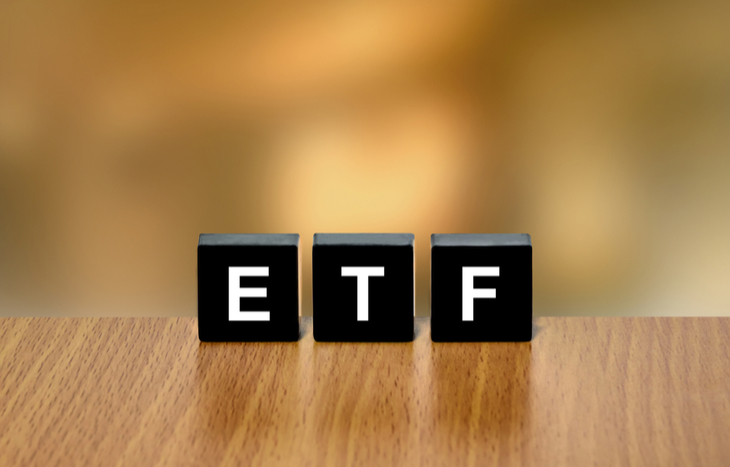What is a Mid Cap ETF?
When it comes to investment vehicles, ETFs are often considered middle-of-the-road. They’re a great option for those who want more diversification than owning a few stocks, yet are more focused than index investing. For investors who prefer this sweet spot right in the middle, there’s mid cap ETFs.
Mid cap ETFs are a true middle-of-the-road investment in the sense that they’re about as balanced as can be for investors. They offer equal parts risk and reward: both in the vehicle (ETF) and the allocation (mid caps). Needless to say, mid cap funds are an intriguing prospect for investors of all types.
Let’s take a closer look at mid cap ETF investing: what these funds look like, how they behave and why they’re often used as ballast in both aggressive and conservative portfolios.

Mid Cap ETF Definition
To really understand the balance prospects of mid cap ETFs, it’s important to understand market capitalization. These are funds that focus primarily on mid-market companies with a market capitalization of between $2 billion and $10 billion. And while this might seem like a relatively narrow (and arbitrary) segment, it’s packed with companies on both the upswing and the downtrend.
Mid cap ETFs seek to capitalize on companies that are in a transformative period. Those breaching the $2 billion threshold are likely on their way up, soon to be large cap companies with more established cash flows and revenues. Those falling below $10 billion are potential value plays: companies going through restructuring or suffering temporary duress. In either case, the mid-market segment offers enticing opportunities. ETFs are a great way to capitalize on both up and down trends, by focusing on an entire market cap segment.
Best by Performance
The balance of risk and reward from mid cap stocks makes them an enticing prospect for many investors. As such, there’s a wealth of mid-market-focused ETFs out there. If you’re looking to cut through to the top-performers, it’s hard to beat the returns of these institutionalized funds:
- Vanguard Mid-Cap ETF (VO)
- Schwab U.S. Mid-Cap ETF (SCHM)
- iShares Russell Mid-Cap Growth ETF (IWP)
- SPDR S&P Midcap 400 ETF (MDY)
- WisdomTree U.S. Mid-Cap Dividend Fund (DON)
It’s also important to consider looking beyond funds that merely track a major index. Many ETFs also offer prospects aimed at mid cap growth stocks, mid cap value stocks, dividend growth stocks in the mid cap range and many other niches.
ETFs Offer a Balanced Approach
As mentioned, ETFs are often seen as a balanced way of investing. Likewise, mid cap stocks tend to provide investors with a modicum of balance in that they’re more established than small caps, but still offer more momentum than large caps. Pairing mid caps with ETFs is a recipe for equilibrium.
Mid cap ETFs offer plenty of growth potential and price appreciation investors want to see from their holdings. There’s a level of accepted volatility that’s smoothed out by the aggregated nature of an ETF. While some stocks fall into the mid-cap range and languish, others push into it and continue trending upward. The ETF delivers one balanced price point for investors to easily track and feel confident about.
This well-balanced formula makes mid cap ETFs something of a complement to nearly any investment style. Aggressive investors might lean on these funds to bring stability to their portfolio without stomping growth. Conversely, conservative investors might use a mid cap ETF to bring a controlled level of risk-reward into their portfolio.
Are Mid Cap ETFs Safe From Volatility?
All this talk of balance can make mid cap ETFs sound like infallible investments; however, they’re far from it. While they’re more insulated than their small cap counterparts, these ETFs aren’t immune to volatility. In fact, without proper diversification, they can actually become quite risky. For example, a sector-specific mid cap ETF might suffer mightily if there’s downturn in that area of the economy.
There’s also some liquidity risk involved in mid cap ETFs. Because many investors buy and hold these funds as ballast for their portfolios, trading volumes tend to suffer. Moreover, fund managers could also run into liquidity issues when it comes to the securities that comprise the ETF. In this way, the balance of these ETFs actually works against them.
Finally, as with any ETF, there’s the risk of over-diversification, to the point of sacrificing returns. While they might be mid-market-focused, it’s easy for mid cap ETFs to fall into the trap of aggregating too broad of a portfolio. When this happens, the fund regresses to the mean, losing its risk-reward.
The Bottom Line on Mid Cap ETFs
Mid cap ETFs are the “jack of all trades” investment in that they lend themselves to almost any investing strategy. No matter how you look at them, the virtue of these investments is their balance. If you’re aggressive, they’re a hedge against overt volatility; if you’re conservative, they invite a little opportunity into your portfolio. The combination of ETF aggregation and mid cap opportunities combines into an ideal investment.
While mid cap ETFs are far from infallible, they’re definitely worth consideration—especially for those new to investing who want to explore their risk tolerance. With relatively low management fees on most funds (less than 0.50%), they won’t eat into total return on investment, either. If you want less volatility than small caps but more growth potential than large caps, mid-market is a happy medium. And ETFs make it an even friendlier place to find investment opportunities. To expand your knowledge of the middle market, sign up for the Liberty Through Wealth e-letter below. This newsletter gives you expert stock insights and investment analysis unlike anywhere else!
[adzerk-get-ad zone="245143" size="4"]




